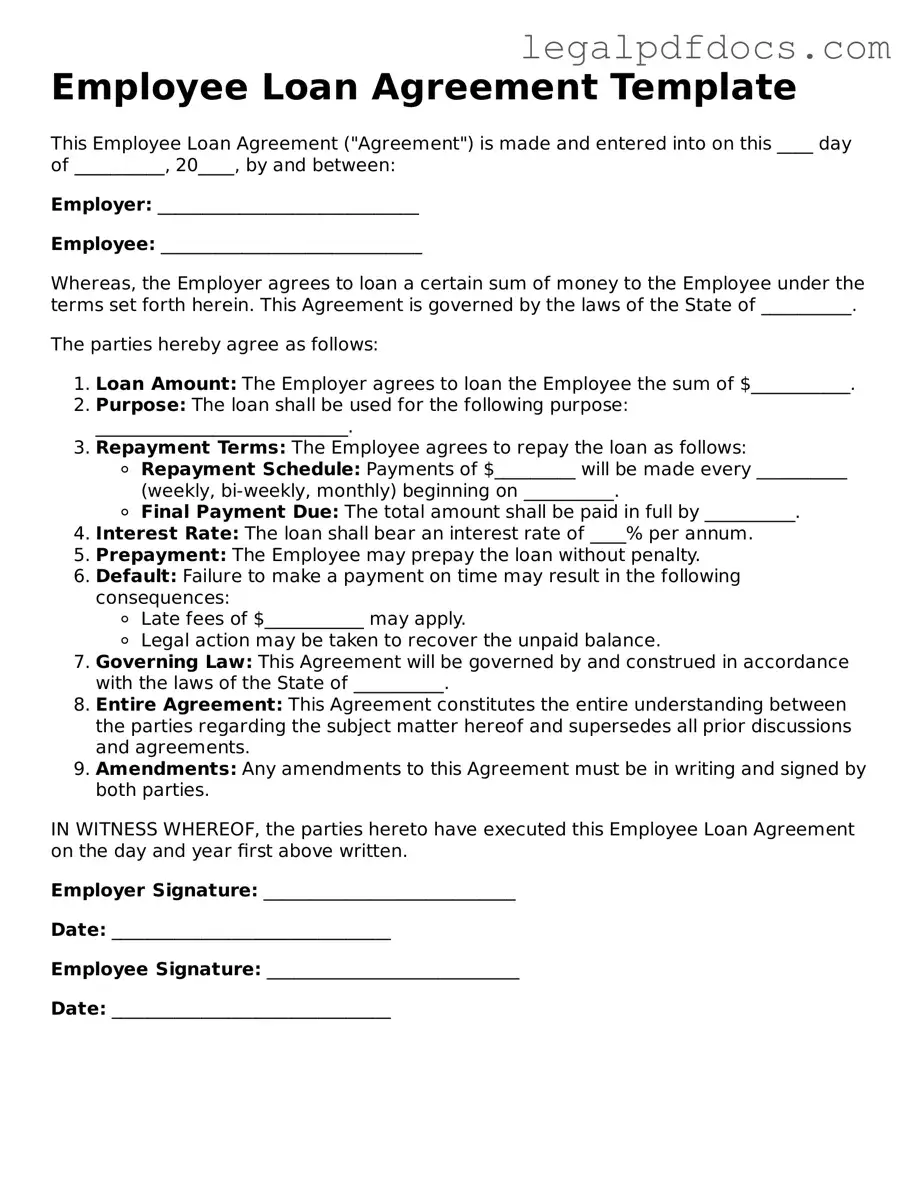When employees find themselves in need of financial assistance, an Employee Loan Agreement can serve as a vital tool to facilitate a supportive and structured lending process. This form outlines the terms and conditions under which an employer provides a loan to an employee, ensuring that both parties are clear on their rights and responsibilities. Key elements typically included in the agreement are the loan amount, repayment schedule, interest rates (if applicable), and any potential consequences for defaulting on the loan. Additionally, the form may specify the purpose of the loan, whether it’s for personal emergencies, education, or other significant expenses. By formalizing the arrangement, the Employee Loan Agreement not only protects the employer’s interests but also provides the employee with a clear understanding of the obligations they are undertaking. Such transparency fosters trust and accountability, making it easier for both parties to navigate the lending process smoothly.
